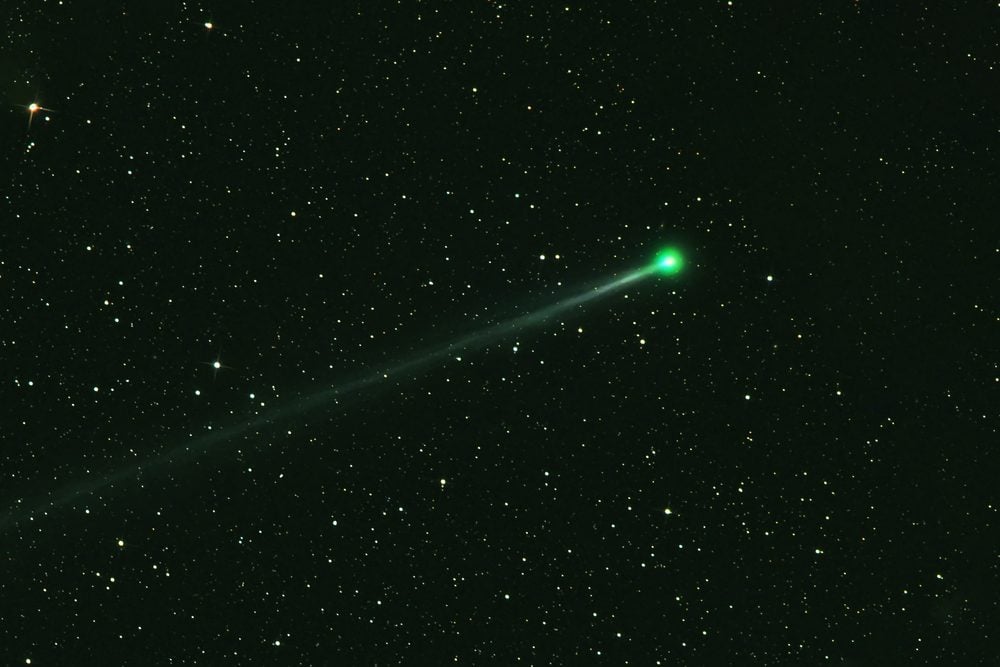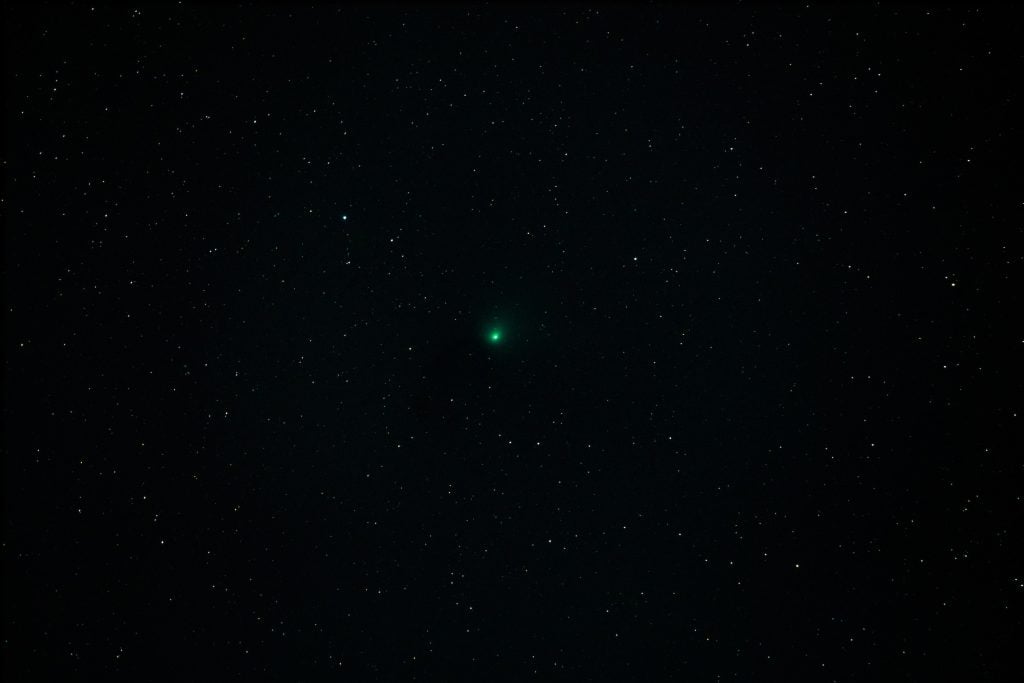Emerald Wonders: Exploring The Science Behind Green-Hued Comets
The ethereal beauty of a green comet streaking across the night sky is a captivating sight, but what causes this unusual hue? The solution rests within the intricate dance involving sunlight, molecules, and the distinct composition of a comet’s nucleus.

Comets are essentially cosmic time capsules composed of ice, dust, and volatile compounds. While a comet follows its elliptical orbit toward the Sun, heightened solar radiation induces the sublimation of its icy core. This process liberates gases and dust, giving rise to a radiant coma—a misty, luminous shroud encircling the nucleus—and a tail that extends in the direction opposite to the Sun, driven by the solar wind.
The vibrant green color in certain comets is primarily attributed to the presence of diatomic carbon (C2) molecules within the coma. When ultraviolet (UV) sunlight hits the C2 molecules, it causes them to undergo a process called photodissociation, where they break apart into individual carbon atoms.
These carbon atoms then recombine with nearby molecules, often forming more complex hydrocarbons like cyanogen (CN) and formaldehyde (H2CO). It’s the presence of these hydrocarbons and the subsequent chemical reactions that contribute to the green glow.

Specifically, the green color emerges from the emission of light at a specific wavelength when the hydrocarbon molecules transition from an excited state to a lower energy state. Cyanogen (CN), for example, emits green light at around 500 nanometers—a shade often associated with the color of a green comet.
Not all comets exhibit this green coloration, as their composition varies based on factors such as their origin and history. Additionally, other gases like carbon monoxide (CO) and neutral carbon (C) can also contribute to the overall color of a comet’s coma.
